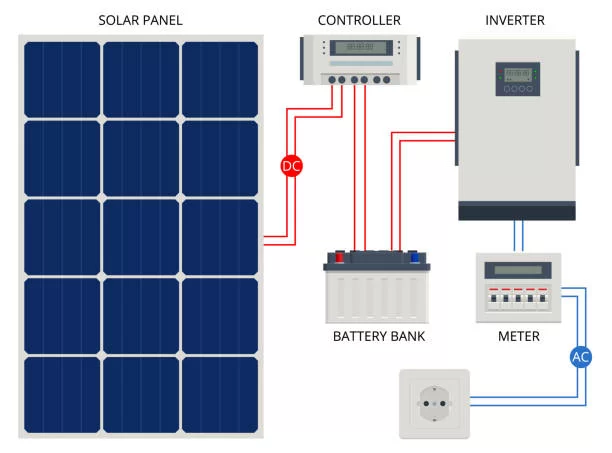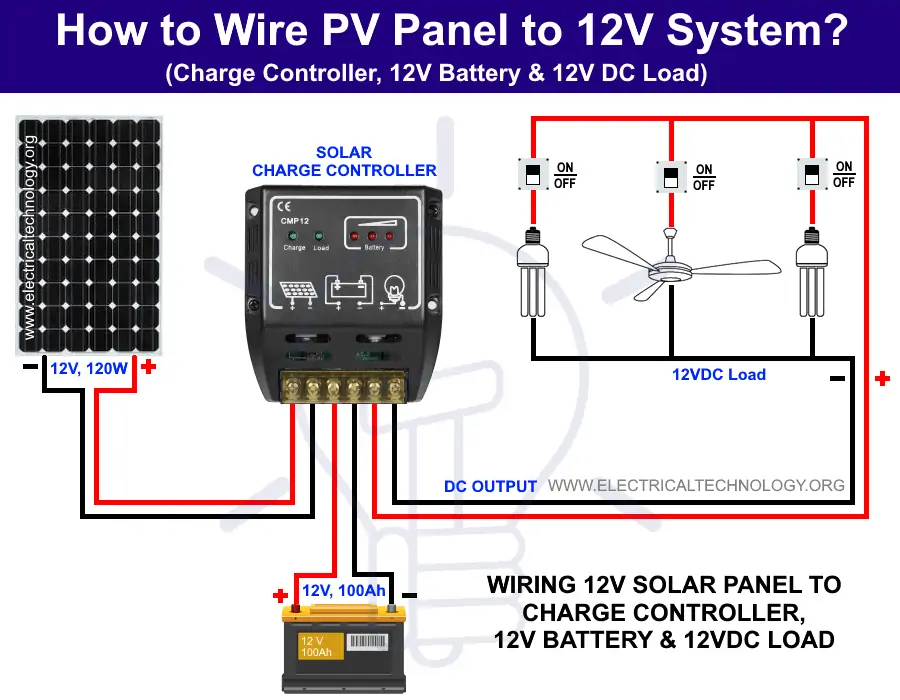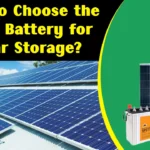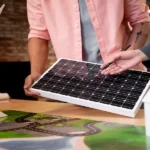Installing solar panels at home is becoming very popular in India. Many people are now interested in learning how to connect a solar panel to a battery. This setup is very useful for powering small appliances, lights, fans, or for backup during power cuts. Understanding how to wire a solar panel to a battery is an important step for anyone who wants to explore solar energy for personal or small-scale use.
This article will guide you in simple words on how to wire a solar panel to a battery. It covers the tools needed, safety tips, wiring process, and important things to keep in mind for better performance. By the end, you will have a complete idea of how to connect a solar panel and battery safely at home.
Why Connect a Solar Panel to a Battery?

Before starting the wiring process, let’s understand why batteries are important in a solar system.
- Store energy for later use – A solar battery stores the electricity generated by panels during the day so you can use it at night or during power cuts.
- Ensure backup power – In India, many places still face power cuts. A solar battery ensures lights and fans continue working.
- Smooth energy supply – Solar power can fluctuate with sunlight. Batteries help balance supply and ensure steady electricity.
- Save on bills – Using stored energy reduces dependence on the grid.
Key Components You Need
To connect a solar panel to a battery, you will need the following components:
- Solar Panel – Captures sunlight and converts it into electricity.
- Battery (Deep Cycle Battery preferred) – Stores the electricity for later use.
- Charge Controller – Controls charging and prevents battery damage.
- Inverter (optional) – Converts DC power from the battery into AC power for home appliances.
- Cables and Connectors – For safe wiring.
- Fuse or Circuit Breaker – For protection against short circuits or overload.
Also Read Solar Glossary: 25 Essential Terms Every Indian Should Know for Solar Energy
Safety Precautions Before Wiring
Working with solar panels and batteries involves electricity, so safety is important:
- Always wear insulated gloves while handling wires.
- Use correct wire size to avoid overheating.
- Do not connect panels directly to the battery without a charge controller.
- Keep batteries in a well-ventilated area.
- Avoid touching exposed wires with wet hands.
Step-by-Step Guide to Wiring a Solar Panel to a Battery
Step 1: Place the Solar Panel
- Install the solar panel in a place with maximum sunlight, like rooftops or open balconies.
- Make sure the panel faces south in India for maximum energy capture.
Step 2: Connect the Charge Controller
- A charge controller is a must between the solar panel and battery.
- It prevents overcharging and ensures longer battery life.
- Place the charge controller close to the battery for efficiency.
Step 3: Wire the Battery to the Charge Controller
- Connect the positive (+) terminal of the battery to the positive terminal of the charge controller.
- Connect the negative (-) terminal of the battery to the negative terminal of the charge controller.
- Double-check the polarity to avoid damage.
Step 4: Wire the Solar Panel to the Charge Controller
- Connect the positive (+) cable of the solar panel to the positive input of the charge controller.
- Connect the negative (-) cable of the solar panel to the negative input of the charge controller.
- The controller will now regulate the current flow into the battery.
Step 5: Add Fuse or Breaker
- Place a fuse or circuit breaker between the solar panel and charge controller.
- This protects the system from short circuits or power surges.
Step 6: Optional – Connect Inverter
- If you want to run AC appliances (TV, fridge, etc.), connect an inverter.
- The inverter should be connected to the battery terminals.
- Now, the stored DC power will be converted into usable AC power.
Common Mistakes to Avoid
- Direct connection without charge controller – This can overcharge the battery and reduce its life.
- Wrong wire size – Thin wires can overheat and cause energy loss.
- Loose connections – Can lead to sparks or system failure.
- Not checking polarity – Reversed connections can damage the battery or controller.
Tips to Improve Efficiency
- Use deep cycle batteries as they are designed for solar use.
- Clean the solar panels regularly to remove dust.
- Place batteries in a cool and dry place.
- Choose MPPT charge controllers for better efficiency.
- Check connections every few months for safety.
Advantages of a Solar Panel + Battery Setup
- Reduces dependence on grid electricity.
- Provides reliable backup during power cuts.
- Saves money on electricity bills.
- Encourages use of renewable energy.
- Long-term solution with minimal maintenance.
FAQs on Wiring Solar Panel to Battery
Q1: Can I connect a solar panel directly to a battery?
No. Always use a charge controller to protect the battery from overcharging.
Q2: What size battery is best for solar panels?
It depends on your energy needs. For small home use, a 12V or 24V deep cycle battery is common.
Q3: How many solar panels do I need to charge a battery?
It depends on battery capacity and panel wattage. For example, a 100Ah battery may need at least a 300W panel for effective charging.
Q4: Can I use car batteries for solar storage?
Car batteries are not suitable. Use deep cycle or solar-specific batteries.
Q5: How long will it take to charge a battery with solar panels?
Charging time depends on sunlight, panel wattage, and battery size. On average, it may take 5–8 hours of sunlight.
Q6: Is it safe to install solar panels and batteries myself?
For small DIY projects, yes. But for larger setups, it is better to hire a professional installer.
Final Thoughts
Learning how to wire a solar panel to a battery is a practical skill for anyone exploring renewable energy. This setup ensures that the energy produced by your solar panels is stored and available when you need it most. For Indian homes, it is a great solution to tackle frequent power cuts, reduce electricity bills, and promote sustainable energy use.
With the right equipment, proper wiring, and safety measures, you can easily create a reliable solar power system at home.










